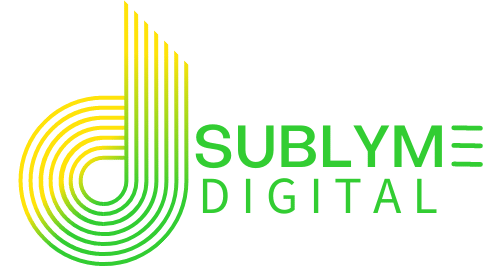How Businesses Can Succeed with AdWords in 6 Simple Steps
Google AdWords (or Google Ads, as it’s now called) can feel overwhelming when you’re just starting out. You’ve got keywords, campaigns, bids, Quality Scores, and a hundred other technical terms that might make your head spin. But you know what? It doesn’t have to be that complicated.
For small businesses, Google AdWords is like a secret weapon. It allows you to reach customers who are actively searching for what you offer—whether that’s a local coffee shop, a boutique clothing store, or an online service. The best part? You don’t need a massive budget to see results.
This guide will walk you through six powerful tips to help you master Google AdWords, even if you’re a complete beginner. Think of it as your step-by-step roadmap to creating campaigns that actually work. Ready? Let’s dive in.
Key Takeaways
- Google AdWords is a powerful tool for small businesses to drive targeted traffic and grow their customer base.
- Creating a well-structured campaign with clear goals is essential for success.
- Small businesses should focus on budget management, keyword research, and ad copy optimization to maximize ROI.
- Avoid common pitfalls like neglecting audience targeting or failing to monitor campaign performance.
1. Set Clear Goals from the Start
Here’s the thing: if you don’t know where you’re going, how will you know when you’ve arrived? Before you even log into Google Ads, take a moment to define your goals. Are you trying to drive more traffic to your website? Get people to call your business? Sell more products online?
Clear goals will guide every decision you make, from choosing keywords to writing ad copy. For example, if your goal is to drive calls, you’ll want to use call extensions in your ads. If you’re focused on sales, you’ll need to optimize your landing pages for conversions.
Think of your goals as the foundation of your campaign. Get them right, and everything else will fall into place.
2. Focus on the Right Keywords
Keywords are the backbone of any Google AdWords campaign. They’re the bridge between what your customers are searching for and what you’re offering. But here’s the catch—not all keywords are created equal.
For small businesses, long-tail keywords are your best friend. These are specific phrases like “affordable web design services” or “custom birthday cakes near me.” They may not get as much traffic as broader terms, but they attract people who are ready to take action.
Use Google’s Keyword Planner to find relevant keywords with a good balance of search volume and competition. And don’t forget to update your keyword list regularly based on what’s working and what’s not.
Google AdWords is like a secret weapon for small businesses—it lets you reach the right customers at the right time without breaking the bank.
3. Create Compelling Ad Copy
Your ad copy is your chance to make a great first impression. Think of it like a storefront window—it needs to grab attention and make people want to learn more.
Highlight what makes your business unique. Do you offer free shipping? A 24-hour turnaround? Exceptional customer service? Whatever it is, make sure it’s front and center.
Also, include a clear call-to-action (CTA). Phrases like “Shop now,” “Call today,” or “Get a free quote” tell people exactly what to do next. And don’t forget to use your target keywords naturally in your ad copy to improve its relevance and Quality Score.
4. Set a Realistic Budget
Let me explain: one of the best things about Google AdWords is that you have complete control over your spending. You can set a daily budget as low as $10 and adjust it based on your campaign’s performance.
Start small and scale up as you see results. Keep in mind that it’s not about how much you spend—it’s about how effectively you spend it. Use tools like Google’s bidding strategies to optimize your budget for clicks, conversions, or whatever your goal may be.
For more insights into scaling your campaigns effectively, check out our comprehensive guide to scaling Google AdWords in 2025 for actionable strategies tailored to small businesses.
5. Monitor and Optimize Regularly
Here’s the truth: no campaign is perfect right out of the gate. The key to success is continuous optimization.
Keep an eye on key metrics like click-through rate (CTR), cost-per-click (CPC), and conversion rate. These numbers will tell you what’s working and what needs improvement.
Test different versions of your ads to see what resonates most with your audience. For example, try different headlines, descriptions, or calls-to-action. Even small tweaks can lead to significant improvements in performance.
And don’t forget to use negative keywords to filter out irrelevant traffic. For example, if you’re a premium service provider, you might add “cheap” or “free” as negative keywords to avoid attracting the wrong audience.
6. Leverage Geo-Targeting
If your business serves a specific area, geo-targeting is a must. This feature allows you to show your ads only to people in a particular location, ensuring your budget is spent on reaching the right audience.
For example, if you run a local bakery, you can target users within a 10-mile radius of your shop. Or, if you’re an online business that only ships to certain regions, you can focus your ads on those areas.
Geo-targeting is especially useful for small businesses with limited budgets because it ensures every dollar is spent efficiently.
We Build Cool

Success Stories
365 Data Centers
Discover how we rapidly rebuilt and optimized a 30-page website for 365 Data Centers, restoring their online presence and managing digital ad campaigns across key regions to drive engagement and growth.
XTECH Football Pads
Discover how we transformed XTECH Football Pads‘ digital presence, boosting their online sales and tripling website traffic through innovative website development and user experience enhancements.
BeEarth Foundation
Discover how we partnered with the BeEarth Foundation to develop a website that aligns with their mission of sustainability and global engagement. Our work has significantly increased their online visibility and engagement, supporting their efforts to promote sustainable development.
We Recycle Solar
Learn how we illuminated digital success for We Recycle Solar by completely redesigning their website to reflect their leadership in the growing solar recycling industry and implementing strategic digital advertising campaigns that enhanced their visibility at key industry events.
Preferred Home Health Care & Nursing Services
Explore how we elevated the digital presence of Preferred Home Health Care & Nursing Services by enhancing their website for better lead generation, building a dedicated site for staff recognition, and optimizing SEO for their location pages.
What Our Clients Say: Elevating Online Success
Common Mistakes to Avoid
1. Neglecting Campaign Structure
Imagine trying to organize your closet without separating shirts, pants, and shoes. Chaos, right? The same goes for your Google Ads campaign. Keep things organized by creating separate campaigns and ad groups for different products or services.
2. Ignoring Mobile Optimization
Honestly, if your ads and landing pages aren’t mobile-friendly, you’re leaving money on the table. More than half of all Google searches happen on mobile devices, so make sure your website looks great and loads quickly on smartphones.
3. Forgetting About Landing Pages
Your ad might be amazing, but if your landing page doesn’t deliver, people will leave without converting. Make sure your landing pages are relevant, easy to navigate, and optimized for conversions.
Final Thoughts
Google AdWords might seem complicated at first, but it’s one of the most effective tools for small businesses looking to grow. By setting clear goals, choosing the right keywords, and optimizing your campaigns, you can drive traffic, generate leads, and boost sales—all without a massive budget.
At Sublyme Digital, we’re passionate about helping small businesses succeed with Google AdWords. Whether you’re launching your first campaign or looking to improve your results, we’re here to guide you every step of the way.
FAQs
Answer: It depends on your goals and industry. Start with a modest daily budget (e.g., $10–$20) and adjust based on your campaign’s performance.
Answer: Long-tail keywords are specific phrases with lower search volume but higher intent. They help small businesses target users who are more likely to convert.
Answer: Use metrics like click-through rate (CTR), cost-per-click (CPC), and conversion rate to measure your campaign’s performance and ROI.
Answer: Negative keywords prevent your ads from showing up for irrelevant searches, ensuring your budget is spent on reaching the right audience.
Answer: Sublyme Digital provides expert guidance on campaign setup, optimization, and performance analysis to help small businesses maximize their ROI.
Let's Build Something Sublyme
Ready to take your small business to the next level with Google AdWords? Contact Sublyme Digital today for a free consultation. Let’s create campaigns that deliver real results for your business.



